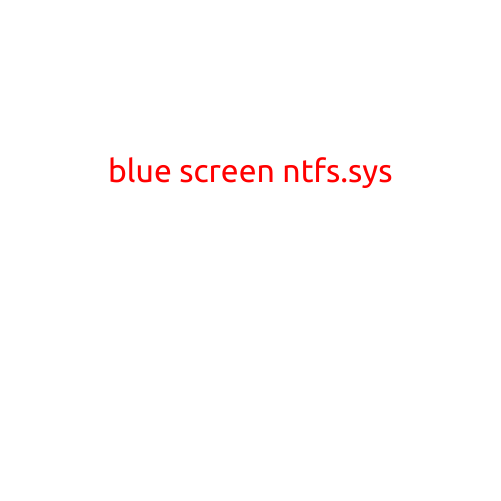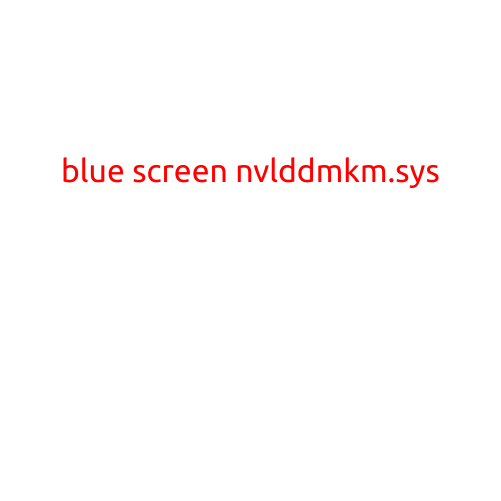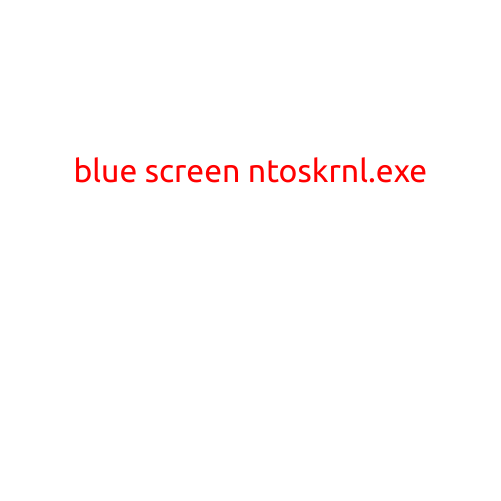
Blue Screen Not Less or Equal: A Deep Dive into the Mysterious Error
The dreaded Blue Screen of Death (BSoD), also known as a “Blue Screen Error,” is a familiar sight for many Windows users. But what happens when the error message reads “Blue Screen Not Less or Equal”? In this article, we’ll delve into the meaning behind this cryptic message and explore possible causes and solutions.
What does “Blue Screen Not Less or Equal” mean?
The “Blue Screen Not Less or Equal” error message is a type of Stop Error, which is a critical system failure that causes the operating system to crash. The message itself is somewhat ambiguous, but it typically indicates a problem with the system’s memory management.
In essence, the error message is warning that a critical system process has failed, and the system is unable to load or access the required amount of memory necessary for continued operation. The “Not Less or Equal” part of the message seems to imply that the memory allocation has failed, and the system is unable to free up enough memory to continue functioning.
Possible causes of the “Blue Screen Not Less or Equal” error
- Insufficient memory: One of the most common causes of this error is a lack of available memory. If your system is running low on RAM or is struggling to allocate enough memory for a particular process, it may trigger a Blue Screen Not Less or Equal error.
- Driver conflicts: Outdated, corrupted, or incompatible drivers can cause system crashes and Blue Screen errors. Make sure to regularly update your drivers to avoid compatibility issues.
- Hardware conflicts: Issues with your computer’s hardware, such as faulty RAM or a malfunctioning graphics card, can cause memory access errors and trigger the Blue Screen Not Less or Equal error.
- Malware infections: Malware, such as viruses or trojans, can compromise your system’s memory management and cause errors like this. Run regular virus scans to detect and remove any malware.
- System file corruption: Corrupted system files or registry entries can also cause memory management issues, leading to Blue Screen errors.
How to troubleshoot and fix the “Blue Screen Not Less or Equal” error
- Restart your system: Sometimes, a simple reboot can resolve the issue. Shut down your system and restart it to see if the error persists.
- Check system logs: Open the Event Viewer to review system logs and look for any error messages or system crashes that may be related to the Blue Screen Not Less or Equal error.
- Run a memory test: Run a memory stress test using tools like MemTest86+ or Windows Memory Diagnostic to detect any issues with your system’s RAM.
- Check for driver updates: Update your drivers to the latest versions using the Windows Update tool or a hardware manufacturer’s website.
- Perform a System Restore: If you’ve recently installed new software or hardware, try performing a System Restore to a previous point when the system was functioning correctly.
- Run a malware scan: Use an anti-virus program to scan your system for malware and remove any threats detected.
- Consider a system refresh: If none of the above steps resolve the issue, it may be necessary to perform a system refresh or reinstall Windows to start with a clean slate.
In conclusion, the “Blue Screen Not Less or Equal” error is a critical system failure that requires immediate attention. By understanding the possible causes and troubleshooting steps, you can identify and resolve the issue, ensuring your system remains stable and secure.





